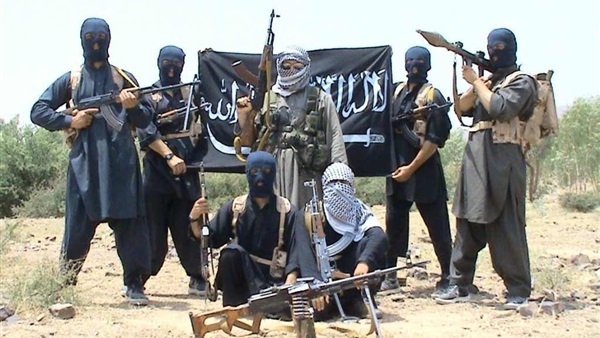Al-Qaeda organization … Terrorism industry center

Al-Qaeda is alive and well in a striking manner. The organization is even more dangerous than Daesh in some parts of the world, especially in western Africa, southern Asia, Somalia and Yemen, according to a report by the United Nations in February 2018.
Yemen,
in particular, has become the organization's international nerve center, the
United Nations said in its report.
Although
Daesh is an ideological offshoot of al-Qaeda, it was close to eclipsing this
mother organization in its early beginnings. Nonetheless, the emergence of
cracks within Daesh at the time al-Nusra Front appeared as a branch of al-Qaeda
in Syria showed that al-Qaeda and Daesh are two different organizations, even
as they share some similarities.
It
is no secret that the brutality Daesh demonstrated in the areas it controls
served al-Qaeda best. This brutality gave al-Qaeda the chance to claim that it
opposes it. To drive its point in this regard home, al-Qaeda refused to target
civilians, but only focused on army troops, policemen and government officials.
The
past few years, during which Daesh rose to terrorist stardom, gave al-Qaeda a
chance to take some rest Al-Qaeda had the chance during the same years to
reorganize itself and return to the stage of its presumed jihad to end the struggle
for the title of the world's leading terrorist organization in its own favor.
According
to the same United Nations report, Tahrir al-Sham, formerly al-Nusra Front, in
Syria is still the world's strongest and largest branch of al-Qaeda. It
combines between 7,000 and 11,000 fighters. To convince smaller militant groups
to join in, Tahrir al-Sham resorts to threats and violence at times and
financial incentives at others.
Al-Qaeda
is a multinational organization that was formed between 1988 and 1990 by Osama
bin Laden and others. Nonetheless, the organization's roots date back to 1984
when the Office for the Service of Arab Jihadists was formed in Peshawar,
Pakistan, by Abdullah Azzam, one of the founders of al-Qaeda. Azzam played a
big role in attracting and receiving jihadist elements from Arab states.
The
members of al-Qaeda went to Afghanistan to fight the communist Soviets there,
with backing from the United States which created the organization and enlisted
its services with help from the Pakistani intelligence as part of a program by
the Central Intelligence Agency, called "Operation Storm".
Soon
after the end of the war against the Soviets in Afghanistan, al-Qaeda moved its
operations to Iraq where it started fighting against the Americans. It also
started fighting the Americans on American territory.
Ayman
al-Zawahiri, the current leader of al-Qaeda and the former leader of Islamic
Jihad in Egypt, was the mind behind the formation of the organization. Both
al-Qaeda and Islamic Jihad staged separate attacks against the Egyptian
government. However, more than 280 members of Islamic Jihad were put in jail in
Egypt and six others sentenced to death in 1995.
Al-Qaeda
depends in most of its operations on suicide bombers who wear explosive belts. It
also carries out simultaneous bomb attacks against different targets.
After
the end of the Afghanistan war, bin Laden returned to his home country, Saudi
Arabia. However, conflicts with the Saudi government forced him to leave for
Sudan in 1992. The Saudi government also revoked bin Laden's Saudi nationality
two years later.
Bin
Laden had to stay in Sudan until a botched attempt on the life of former
Egyptian president Hosni Mubarak in Addis Ababa, Ethiopia, in 1995. The
Sudanese government then had to ask al-Qaeda members to leave. They then left
for Afghanistan where the ruling Taliban extended them a wide welcome mat.
Taliban
allowed al-Qaeda to open a headquarters in Kabul. It also provided al-Qaeda's
members with the necessary protection until Taliban's defeat in 2001.
The
year 2001 was a decisive one in the history of al-Qaeda as an organization. This
was the year when the US started a massive anti-terrorism campaign in reaction
to the 9/11 attacks. The campaign led to the geographical isolation of
al-Qaeda's leadership. This isolation led to the emergence of local leaders for
each al-Qaeda group in the different places. Nonetheless, all these leaders and
groups acted under the umbrella of the mother organization.







